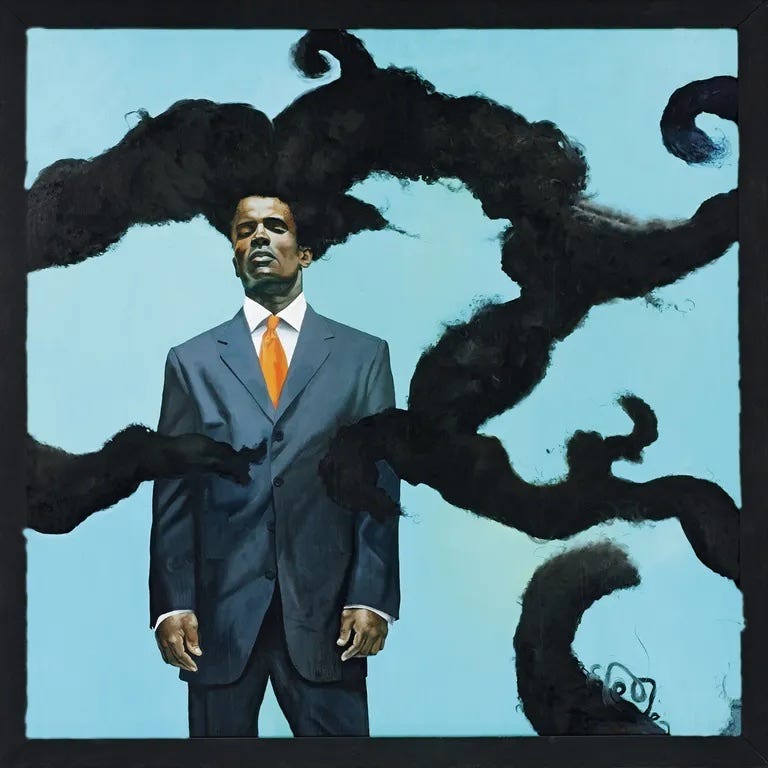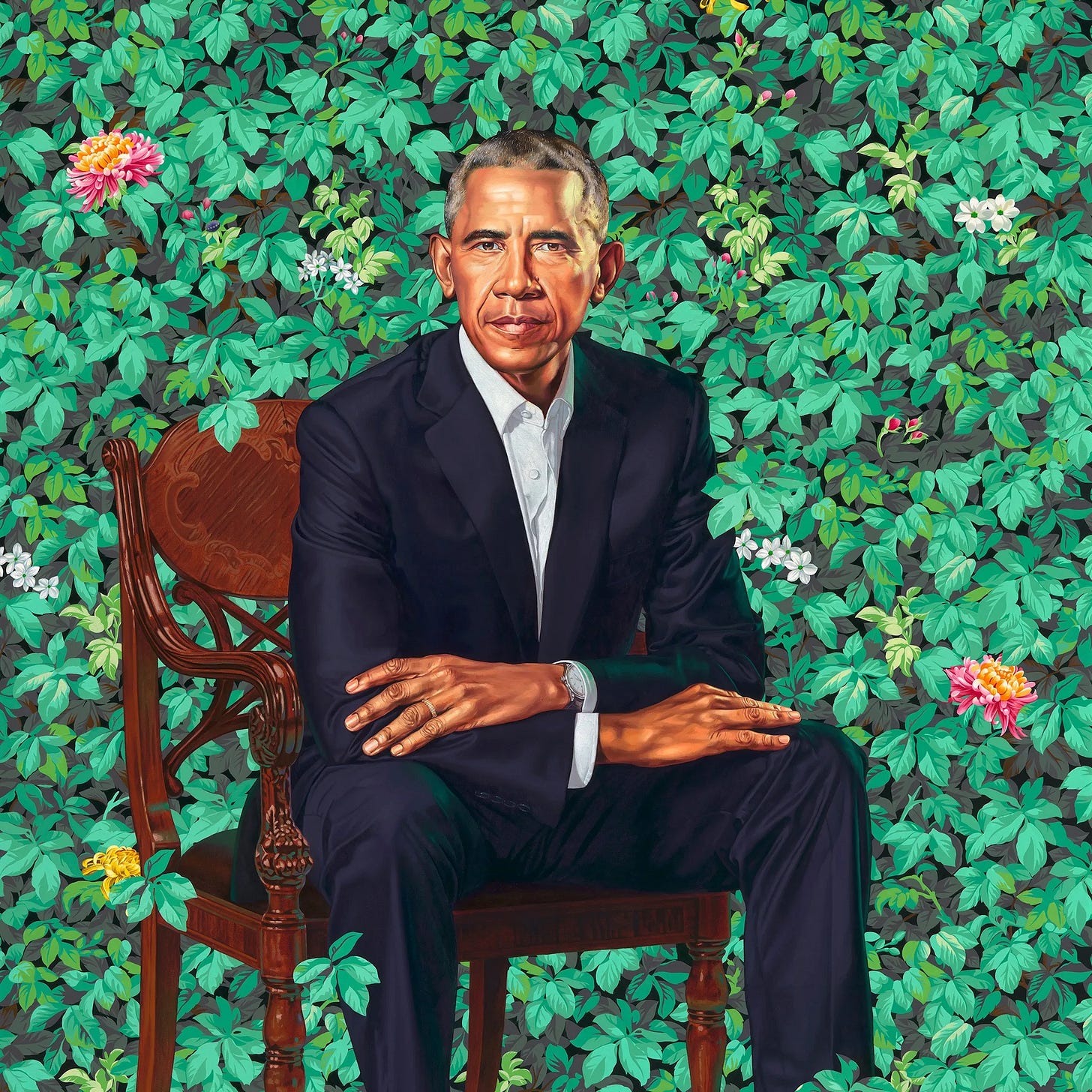Artists and Imposters
Kehinde Wiley, self-doubt and minimising art as an occupation

I saw this post on Instagram the other day. It said ‘Normalize art as a career. Stop asking people what they “really do” after they tell you they are an artist’. It absolutely nailed it for me in terms of highlighting a big assumption that people make about artists: that art is just a hobby or a pastime. Of course for some it is, but for thousands of artists it is their main occupation.
There are some few lucky artists who are supported by the commercial gallery system. But it’s a competitive field, and most practicing artists exist outside of that exclusive world. And it’s hard to sell art if you have to find the buyers yourself. For most artists it is an uphill struggle to survive financially on making art alone, so many are forced to find other sources of income. As a writer I totally understand this problem. I have what is nowadays called a ‘portfolio career’. In other words I do various jobs to make money. Writing is my profession but the reality is that it doesn’t cover my bills. Yet. I always live in hope.
The Instagram post made me think about the implications of minimising art as an occupation in this way. I wonder how many artists doubt themselves and the relevance of their voice when they experience their work as having little professional or financial value. These are the markers of success in our capitalist world and it’s hard to get away from that mindset. It also made me wonder to what extent artists experience feelings of imposterism, the feeling that you’re fraudulent, that you’re pretending to be something you’re not. If you’re not receiving professional or financial recognition as an artist do you question whether you’re actually the real deal?
Those feelings of doubt must surely be magnified for many by the fact of systemic bias in the Art World, which is notorious for gender inequity. Recent studies have shown the extent to which women are underrepresented and undervalued in museums, galleries, and auction houses. Add race into the mix and it’s a double whammy. Things are changing, slowly. In 2017, Lubaina Himid became the first woman of colour to win the prestigious Turner Prize, and this year’s winner Veronica Ryan adds another to the list. The focus on women artists at the Venice Biennale in 2022 also helped move the dial.

I watched a really interesting interview with the American artist Kehinde Wiley this week in which he discussed his feelings of imposterism. Wiley makes colourful, large-scale paintings of African Americans, and is most known for his portrait of President Obama painted back in 2018. He describes the negative impact that class and race has had on his sense of identity as an artist, and how nervous he was at the start of his career operating in the exclusive, predominantly white Art World.
Wiley is one of the lucky ones in that he has managed to break into the mega-gallery system and is now a celebrated contemporary artist. But interestingly he describes how he deals with these feelings of fraudulence on an ongoing basis. Imposter phenomenon hasn’t left him, but he has managed to recognise his insecurities and process them through the content of his paintings. It’s a 5-minute watch, and I found it fascinating and inspiring.
I’d be interested to know your thoughts on any of these ideas and on Wiley’s art.


I really connected with what Wiley says about feeling like an imposter. I feel like that all the time! When I think about it rationally I know that I have a lot of experience in what I do and shouldn't feel that way about myself. But it's interesting what you say about class, race and gender as systemic elements that make people feel like imposters. You can never take those things out of people. Add to that the language that is used around art as not being a proper occupation, and the difficulties of surviving financially, I think it must impact on identity and confidence for many many artists. It would be interesting to do some proper research on it.
Even the Detroit art microcosm is highly competitive with a distinct hierarchy of galleries and artists. You can’t show in the commercially successful spaces unless you’re selling and it’s difficult to sell outside of those spaces, particularly without the desired pedigree of the ‘right’ degree from the ‘right’ institution. There are definite prejudices and can’t emphasize ‘it’s who you know’ enough.
The ones who make it—and by ‘make it’ I mean enjoy a stable existence on an art and art related career—are the ones who are willing to do what’s necessary to keep it all going. There’s a woman in my realm who recently declared she isn’t going to make art anymore because she can’t support herself on it. She’s a victim of the fantasy which we have Van Gogh, Hemingway, etc. to thank for the image of what a ‘real’ artist’s life looks like. Most who are moderately to wildly successful have jobs. A lot teach, which, gratefully is considered ‘acceptable’ work for a ‘real’ artists. Many have some kind of help like a spouse who has a good job and can make a mortgage payment. Somewhere in there we never give up on the chance we might, someday, make to The Show. While we wait for that breakthrough moment, we’ve still got it pretty good.
Kudos on going mostly paid. We have the same bills everyone else has. If anyone should get paid more it’s those of us who contribute to the quality of life. What’s life without art and poetry? Pretty dull.